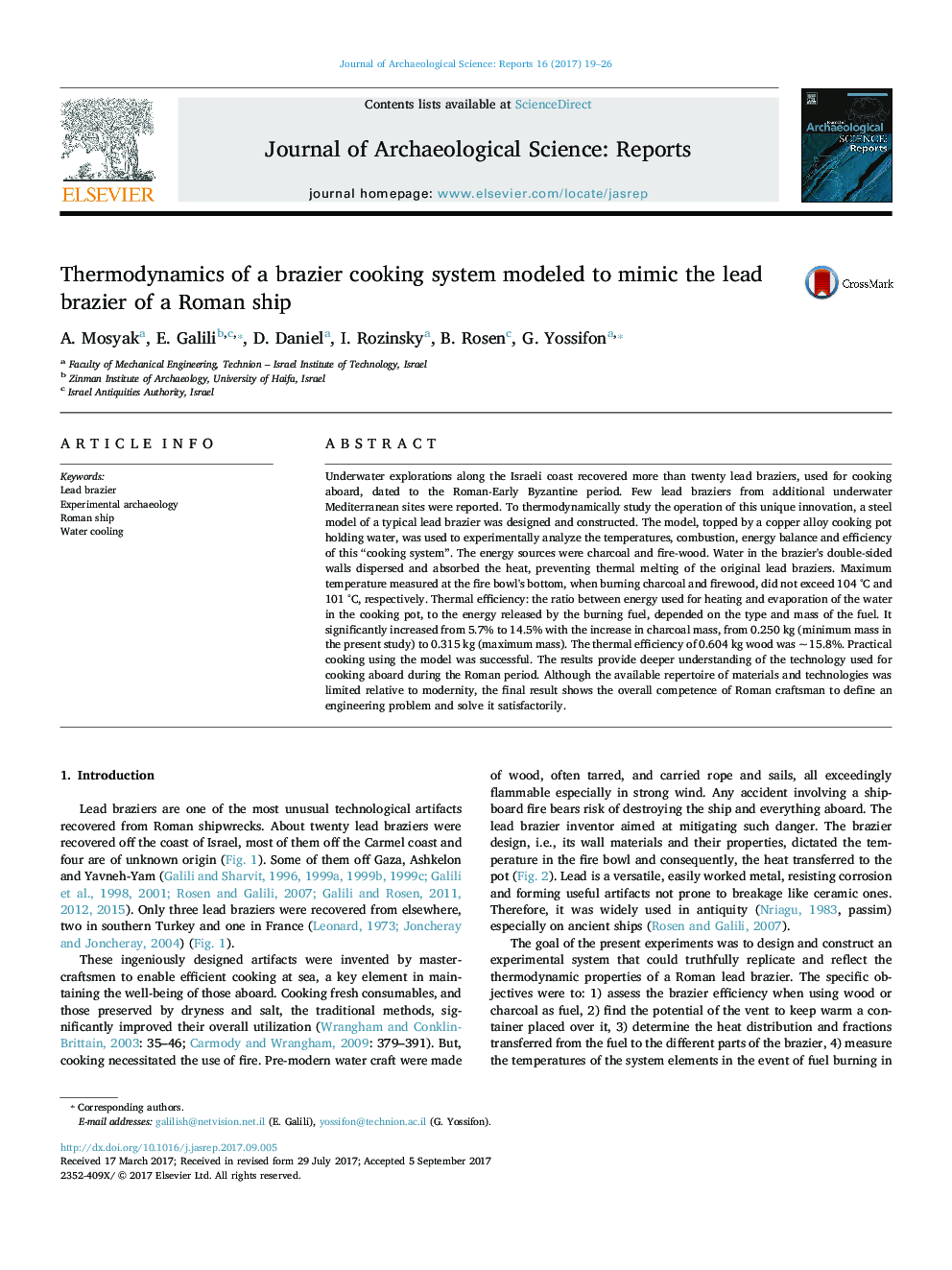| Article ID | Journal | Published Year | Pages | File Type |
|---|---|---|---|---|
| 5112147 | Journal of Archaeological Science: Reports | 2017 | 8 Pages |
Abstract
Underwater explorations along the Israeli coast recovered more than twenty lead braziers, used for cooking aboard, dated to the Roman-Early Byzantine period. Few lead braziers from additional underwater Mediterranean sites were reported. To thermodynamically study the operation of this unique innovation, a steel model of a typical lead brazier was designed and constructed. The model, topped by a copper alloy cooking pot holding water, was used to experimentally analyze the temperatures, combustion, energy balance and efficiency of this “cooking system”. The energy sources were charcoal and fire-wood. Water in the brazier's double-sided walls dispersed and absorbed the heat, preventing thermal melting of the original lead braziers. Maximum temperature measured at the fire bowl's bottom, when burning charcoal and firewood, did not exceed 104 °C and 101 °C, respectively. Thermal efficiency: the ratio between energy used for heating and evaporation of the water in the cooking pot, to the energy released by the burning fuel, depended on the type and mass of the fuel. It significantly increased from 5.7% to 14.5% with the increase in charcoal mass, from 0.250 kg (minimum mass in the present study) to 0.315 kg (maximum mass). The thermal efficiency of 0.604 kg wood was ~ 15.8%. Practical cooking using the model was successful. The results provide deeper understanding of the technology used for cooking aboard during the Roman period. Although the available repertoire of materials and technologies was limited relative to modernity, the final result shows the overall competence of Roman craftsman to define an engineering problem and solve it satisfactorily.
Related Topics
Social Sciences and Humanities
Arts and Humanities
History
Authors
A. Mosyak, E. Galili, D. Daniel, I. Rozinsky, B. Rosen, G. Yossifon,
